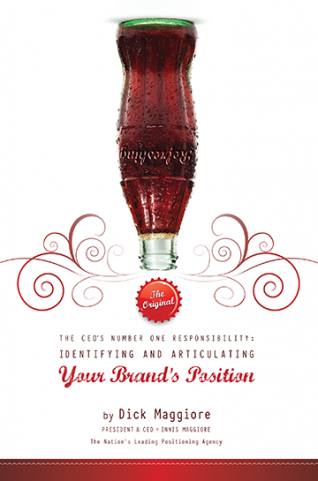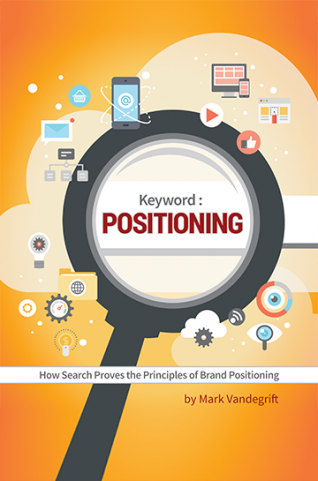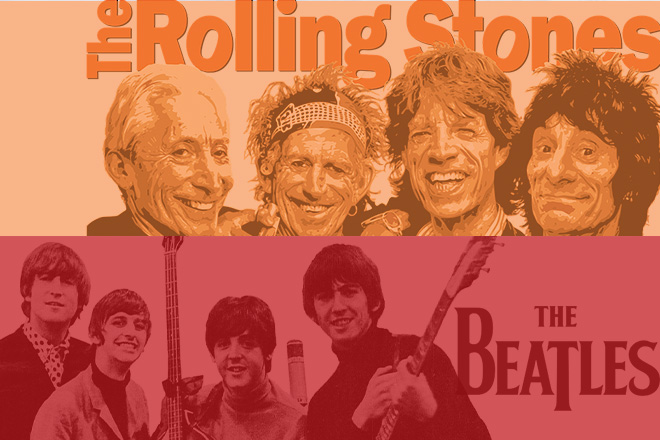A good brand identity strategy cranks marketing up to 11.
Nigel Tufnel of Spinal Tap knows the power of strategy. “These go to 11,” he explains about his model of amplifier, which ordinarily only go to 10. From the name to the logo, hairstyle and lifestyle, staging and stage outfits, to song titles and music, this fictional band boasts a memorable brand that’s cranked as far as cranking can go.
Listening to their bombastic style of heavy metal-meets-prog rock can be likened to having a needle inserted into one’s spine. They’re all about excess combined with clinging to a long-gone youth. The band’s very sharp and shiny metal (get it?) logo looks as tough as their exaggerated facial expressions. No wonder fans anticipate “Spinal Tap II: The End Continues,” the 2025 sequel to 1984’s “This is Spinal Tap.”
“Are you Beatles or Stones?”
The classic dividing line of classic rock has been a debate contrasting the allegedly clean-cut Beatles against the likely overstated down-and-dirty Rolling Stones. It’s never been clear why you had to decide between one and the other in the first place, but people seem to think the choice reflects a fan’s personality.
If you’re wondering what this has to do with brand identity strategy, it has everything to do with it. Selling a group or a singer to fans follows the same process as selling a product or a service to customers. A band or a solo artist is more than its music. They connect with their following through their brand identity like businesses use their brand identity to convey an impression and create a perception to potential customers.
Innis Maggiore, America’s #1 Positioning Ad Agency, knows the value of branding via a strong brand identity strategy. How a brand is presented to prospects is an aggregate of sensory cues (which could include visual and audio cues, as well as those connected to taste, smell, and touch) to create meaning as a means of communicating a brand’s position compared to its competitors with a style that appeals to its potential audience.
Toothpaste has a name, a logo, its positioning (e.g., whitening or cavity-fighting), a package, a physical form (such as gel or paste), a flavor (minty or cinnamon), ingredients, and more.
The Beatles have their name (signifying beat music) and familiar dropped-T logo, their position as melodic pop-rock legends, their clean-cut impression, and more. Before Brian Epstein became their manager, The Beatles wore black leather and swore and smoked on stage. The band members changed their hairstyles from greasers to “mop tops” prior to signing with Brian, who got them matching collarless suits and cleaned up their act in the literal sense. No more bad behavior while performing — plus they were told to bow after each song and introduce the next one. They came from working-class Liverpool and spoke in broad Scouse accents.
The Rolling Stones’ brand was a contrast to that of The Beatles. A name and style borrowed from the blues. No logo (until John Pasche designed the provocative and edgy “tongue and lips” design in 1970). No matching suits nor matching haircuts (the latter of which were usually unkempt and possibly seldom washed). They carried themselves as tough and became famous for bad behavior. Their songs were louder and rougher R&B compared to The Beatles’ melodic and more advanced style, and often borrowed straight from the blues. In fact, Jagger-Richards started writing their own material much later than Lennon-McCartney. The Stones came from swinging London, for more of a street smart, big city vibe.
A further contrast to both was America’s “manufactured” group, The Monkees. A product of a casting call for a TV show, followed by an audition process, the weekly comedy served to promote songs they sang and others wrote. Davy, Micky, Mike, and Peter were the first “long-hairs” to arrive in family living rooms via the television, yet were funny and harmless. Their guitar-shaped logo looked good on a drumhead, while they debuted with matching outfits featuring unique 6-button red shirts. Songs were catchy pop-rock, eventually evolving to include many styles that reflected each member’s personal interest. What was most odd was that there was a brand before there was a band. Records sold phenomenally well, forcing the group to do a concert tour. Odder still, decades after the TV show went off the air, different permutations of the group continued to tour until three of the original four passed away.
Beyoncé must be a hero.
Symbolism can play a part in branding. Contemporary Country artists are identified by their choice of a black cowboy hat (representing someone who’s tough and something of a bad guy) vs. a white cowboy hat (representing the good-guy, hero type). Notwithstanding that Johnny Cash and Willie Nelson didn’t wear cowboy hats, whether black, white, or floral. Beyoncé signified her brand by choosing an enormous white hat for her Cowboy Carter tour.
Each artist’s hat plays a big part in their brands. We often think of brand identities as consisting of things like logo, tagline, color palette, typography, tone, and messaging. So yes, it is true that a brand identity is more than a logo. Yet logos create a powerful connection between brand and customer, band and fans. You can probably picture many of these band logos merely by reading the name — while those logos also conjure up other aspects of their respective brands. Think about AC/DC, Pink Floyd, KISS, Metallica, Sex Pistols, Van Halen, Nine Inch Nails, Public Enemy, Phish, Run-DMC, Gorillaz, and NSYNC. Do you conjure a brand? Do you hear the music?
That proves the value of a good brand identity strategy. As America’s #1 Positioning Ad Agency, Innis Maggiore starts everything with a brand’s position in relation to its competition. The business version of Beatles vs. Stones or black vs. white cowboy hats. The factors we consider, which make a brand identity important, include differentiation, recognition, consistency, overall customer experience, and brand value.
Two examples of music brands that have transcended the music are Taylor Swift and Snoop Dogg. Taylor Swift is a billionaire, tangible proof of strong branding and great marketing combined with tremendous talent. Aside from record-breaking music sales, she has her own clothing and makeup/beauty lines. The term most used to describe her brand identity is “authenticity.” According to Forbes, the key elements that have made Taylor Swift’s personal brand “so enviable and so enduring” are being real, relatable, hardworking, connected to fervent fans (think Apple and Warby Parker), genuinely caring, confident, and willing to take risks to evolve.
Snoop Dogg is probably far better known as personality and pitchman than rapper and record producer. He hangs around with Martha Stewart, relaxes on the beach with some Corona, and is part owner of a Welsh football team. You could say he’s repositioned his brand beyond ’90s gangsta rap to become a likable and easygoing actor and entrepreneur.
Whether you’re starting a band or want help with your brand, crank it to 11 with America’s #1 Positioning Ad Agency — Innis Maggiore. We don’t care if you prefer The Beatles or The Rolling Stones, but do hope you prefer a strong brand identity strategy to trying to make up the music as you go along. Contact our brand partnership team today!



